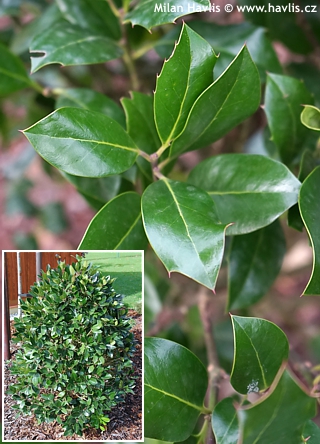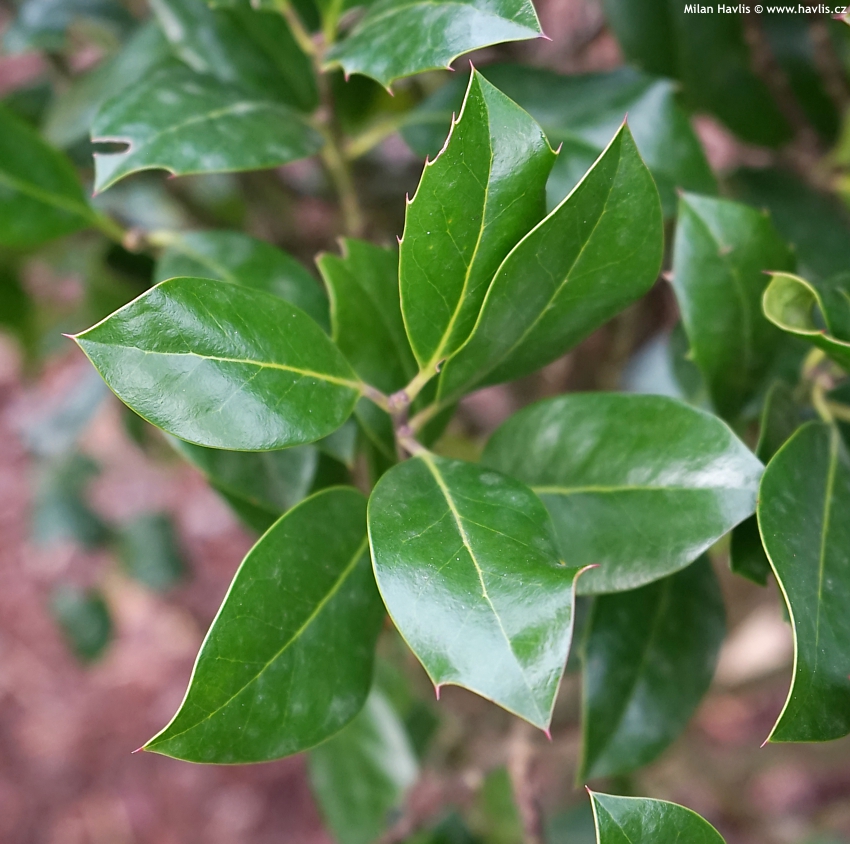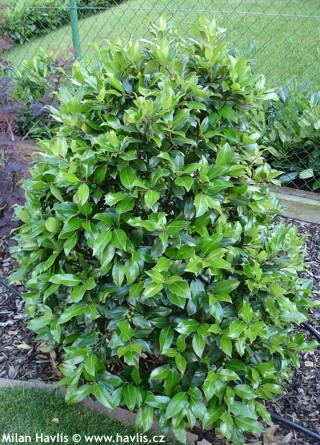Ilex aquifolium 'AMMERLAND' English holly - female
Ilex
Ammerland is the name of a district in northwestern Germany. It comprise of a few towns (e.g. Westerstede, Bad Zwischenan, Edewecht) which are well-known throughout Europe for plant nurseries. Thanks to the humid seaside climate and good soil quality rich in peat, this area is ideal for growing acid-loving plants such as rhododendrons, azaleas, or hollies which literally thrive there. No wonder that new mutations or selections are found there and one can understand when some receive a name that honours its place of origin.
Ammerland holly is another jewel in the family of evergreen shrubs with attractive leaves. They are evergreen, deep green, leathery, and very glossy. Some of them are spiny but most are spineless with entire margins as in Camelliifolia holly. With the onset of cold weather, they take on a deep bluish-purple hue close to the color of the twigs, much like some blue hollies do.
It is a female variety and when pollinated with pollen from a male plant growing nearby (ideally within the same neighborhood), it will make bright red berries in autumn. The birds feast on them in winter but they are inedible for humans. Some sources classify them as poisonous as they contain a small amount of saponins that can cause digestive problems but no records have been made of a more serious injury.
The shrub grows slowly to moderately fast (15-20 cm per year) into a broadly conical shape with a wider base. With age, as the plant grows, the difference between the narrow tip and the wide base disappears and the holly takes on a more rounded, slightly cylindrical shape with a more pronounced tip. It grows to around 3-4 meters in height in gardens, in the wild and in arboretums very old pieces can make twice the size with unlimited root space.
Hollies are often pruned. It is common to cut some branches in December as a Christmas decoration, and to achieve denser or smaller plants they can be pruned in early spring after all frosts. Early summer trimming is also possible, it will help the plants maintain its neat shape.
Grow hollies in moist but well-drained, fertile soil. They can take periods of drought once established but dislike compacted, heavy-clay-based soils that turn very dry in summer, and often too wet in winter. If your soil is such, dig the planting hole only half the depth of the root ball, refine what you dig out and mix well with quality substrate of highly acidic level (low pH value). Using this mixture make a gradual slope from the stem to the original ground level and tamp it down as much as you can. Your root ball should not look like a molehill but more like a wide and flat mound. Mulch it well and keep watering it more often as it will be more prone to drying out as opposed to most common flat-in-the-ground transplanting.
Hollies do best in full sun but can also grow in shade where they will loose their compact habit. This variety proved very hardy even in full sun in winter. However, if you live in a region with cold winters and long-lasting frost we recommend growing it in position sheltered from drying winds, and preferably shaded from winter sun. Before and during winter when the soil is not frozen provide good watering. Hardy to about -27 °C (USDA zone 5b).
Last update 06-10-2022









































